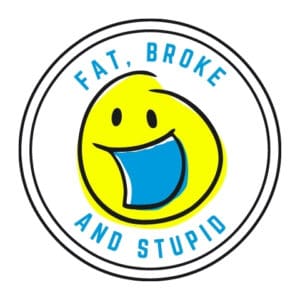Saving money can be difficult and intimidating, especially if you are broke. While it may not seem like it, saving and investing even very small amounts of money on a consistent basis can lead to some pretty amazing financial results.
There are plenty of articles and videos showing you how to turn $5 a day into a million-dollar retirement, but how much money would you have if you saved just a quarter every single day?
Thanks to investing and compound interest, a quarter a day can become a lot of money. For example, saving a quarter a day for 20 years means contributing $1,824. If you invested that money at an 8% average annual return, you could turn it into $4,507. After 40 years you could have $25,516. Not bad!
Small changes to your savings habits coupled with exercising patience can really pay off in the long term. If you are not saving nor investing money already, I strongly encourage you to begin thinking about it. This article will explore what saving just a quarter a day could mean for you and your future.
The rest of this article is divided as follows:
- How Much Would You Contribute?
- The Power of Compound Interest
- Disclaimer
- The Ideal Results
- More Realistic Results
- What If This Money Was Not for You?
- Why You Might Fail
- Life Lessons
- Related Questions
YouTube Video
How Much Would You Contribute?
Let’s begin with the basics. You get a jar and start putting one actual quarter into it every single day. As time goes by, you get a bigger jar. Then, perhaps, a 2nd jar. You get the idea. How much actual money would you have collected over time? This chart should make that clear:
| Time | Money |
| 1 Day | $0.25 |
| 1 Week | $1.75 |
| 1 Month | $7.60 |
| 6 Months | $45.63 |
| 1 Year | $91.31 |
| 2 Years | $182.63 |
| 3 Years | $273.94 |
| 4 Years | $365.25 |
| 5 Years | $456.56 |
| 10 Years | $913.13 |
| 20 Years | $1,826.25 |
| 30 Years | $2,739.38 |
| 40 Years | $3,652.50 |
| 50 Years | $4,565.63 |
| 60 Years | $5,478.75 |
| 70 Years | $6,391.88 |
| 80 Years | $7,305.00 |
OK, it does add up, but slowly and linearly. You could have a pretty nice dinner after a year or treat yourself to something really cool after 10 years. That’s wonderful, and it’s still just with a quarter a day.
It is not, however, a true game-changer to your finances. For that, we will need to add a mystical force known as…
The Power of Compound Interest

“Compound interest is the eighth wonder of the world. He who understands it, earns it … he who doesn’t … pays it.”
–attributed to Albert Einstein
What is compound interest? Investopedia defines it as interest calculated on the initial principal, which also includes all of the accumulated interest of previous periods of a deposit or loan.
What does that mean? You invest some money and earn interest on it. YAY! Then, your initial investment PLUS your first interest payment earns more interest. This happens over and over again. It’s basically interest-on-interest.
It may not seem like much at first, but compound interest grows exponentially. The longer you invest, the more you benefit from its magical powers.
So, what would a quarter a day look like if you could invest it and make it grow with compound interest? Let’s find out…
Disclaimer
I am not a financial advisor, analyst nor a fiduciary of any kind. I have read many books on finance and have taken financial management courses on Coursera.org. I am an investing enthusiast who wants everyone to have the opportunity to invest and improve their personal finances.
Additionally, investing money comes with risks, including the loss of some or all of your money. Consult a fiduciary financial manager. Look into the topic and educate yourself before investing all of your quarters.
The Ideal Results
In a perfect world, we could transfer a quarter every single day into a low-fee investment account like Vanguard and watch our money grow over time. Unfortunately, these accounts often require minimum deposits of $1,000 or more.
Let’s have some fun with this nevertheless. It never hurts to fantasize, right? In an ideal situation, we would match the average annual stock market returns of about 8%, give-or-take.
What would a quarter saved and invested at an 8% average annual return every single day look like over time? Funny you should ask:
| Years | Contribution | Growth (8%) | Total |
| 1 | $91 | $7 | $98 |
| 2 | $182 | $22 | $204 |
| 3 | $273 | $46 | $319 |
| 4 | $364 | $79 | $443 |
| 5 | $456 | $121 | $557 |
| 10 | $912 | $514 | $1,426 |
| 20 | $1,824 | $1,683 | $4,507 |
| 30 | $2,736 | $8,422 | $11,158 |
| 40 | $3,648 | $21,868 | $25,516 |
| 50 | $4,560 | $51,954 | $56,514 |
| 60 | $5,472 | $117,965 | $123,437 |
| 70 | $6,384 | $261,534 | $267,918 |
| 80 | $7,296 | $572,547 | $579,843 |
Not bad! Not bad at all! You can really turn those quarters into something substantial.
However…
More Realistic Results
Unfortunately, it is not easy to start investing with just $0.25 a day. Fortunately, Financial Panther has found a way to earn a 5% interest rate on a savings account. It is called Netspend. You can read all about setting up an account with them, plus tips and hacks, on another Financial Panther article.
So, if you set up a savings account like this with a 5% annual interest rate, what could that do to your quarters?
| Years | Contribution | Growth (5%) | Total |
| 1 | $91 | $4 | $95 |
| 2 | $182 | $13 | $196 |
| 3 | $273 | $28 | $301 |
| 4 | $364 | $47 | $412 |
| 5 | $456 | $73 | $529 |
| 10 | $912 | $292 | $1,204 |
| 20 | $1,824 | $1,342 | $3,166 |
In 20 years, your quarters could transform from $1,824 into $3,166 thanks to compounded investment returns. That’s pretty awesome.
This is a special moment, too, because with $3,000 saved you can now invest into a Vanguard stock market index fund and chase average annual returns hovering around the 8% mark.
You have transferred your $3,166 to Vanguard. Nice! From here, your money could continue to grow as follows:
| Years | Contribution | Growth (8%) | Total |
| 30 | $2,736 | $4,184 | $8,262 |
| 40 | $3,648 | $14,274 | $19,264 |
| 50 | $4,560 | $37,114 | $43,016 |
| 60 | $5,472 | $87,482 | $94,296 |
| 70 | $6,384 | $197,279 | $205,005 |
| 80 | $7,296 | $435,379 | $444,017 |
Now that is some serious, life-changing money! All from just a quarter a day, a consistent investing strategy, and lots of patience and time.
But, who can invest for 80 years?
What If This Money Was Not for You?
Unless you plan to live until you are 110 years old, it is probably too late for you to save and invest quarters for the next 80 years. And that’s fine. Even saving for 20 years would be a great success.
But what if this money was not for you? What if it was for your children and future generations? They would greatly benefit from your change in attitude about saving and investing. They would learn the value of investing and compound interest. It could set life-altering habits at an early age. It would create a foundation with which further investing can continue.
What if, right?!?
Why You Might Fail
This all sounds well-and-good, but is this type of consistent, small-scale saving really practical or possible?
Of course, it is possible. You can do it, but there are some reasons why you might fail. Let’s explore:

- You give up too soon. As you can see in the charts, the longer you save and invest your money the more of it you will have. If you ever stop saving, the end results will dwindle.
- You do no not have a regular, easy deposit plan in place. Having a plan of attack helps. Maybe you deposit the actual quarters at the end of every month. Maybe you make a bank transfer after every 3 months. Whatever it is, having a repeatable, easy action plan and following through could be make or break for you.
- You see the money; you spend the money. Maybe you have been doing this for years and finally have a little money saved up. It will be tempting to take that money and treat yourself. You can do that if you want to, it’s your money after all. Know that if you do, however, your long-term savings plan is finished and you will have to start all over again from scratch.
- Emergencies happen. Let’s be honest… life can be brutal, especially on our finances. It will be very tempting to use this money for emergencies and debt. Maybe that’s why you are doing this to begin with. If so, nice job in having your emergency fund ready! However, if you could just never touch these quarters, never-ever, and leave them alone as if they did not exist, they could turn into something special over the years.
Here are some scary statistics from Forbes about the state of American finances to think about as this article comes to an end:
- 44% of people cannot cover a $400 emergency.
- 43% of students don’t make their student loan payments.
- 38% of households have credit card debt.
- 33% of adults have $0 saved for retirement. (I was one of them until November, 2017)
Life Lessons
- Life can be hard. Have some foresight and plan for the future.
- Compound interest is magical, and everyone can (should) benefit from it.
- Even a little bit, consistently saved and invested, can have huge results.
- No one should be scared or intimidated by investing.
- Anyone can do this!
Related Questions
How long would you need to save quarters to have $1,000,000? To have $1,000,000 you would need 4,000,000 quarters. If you saved one quarter a day, that would be the equivalent of 10,951.4 years, if you include leap years. If you had also invested your quarters at an 8% average annual return, your investment account would reach $1,074,297 in 88 years. That’s much faster!
Is it too late to start investing when you are older? It is never too late to start investing. While your investments might get more conservative in nature as you get older, any increase in your personal wealth thanks to investment returns is an improvement. In fact, if you do not invest, you will actually be losing money due to the decreasing buying power of money over time caused by inflation.

